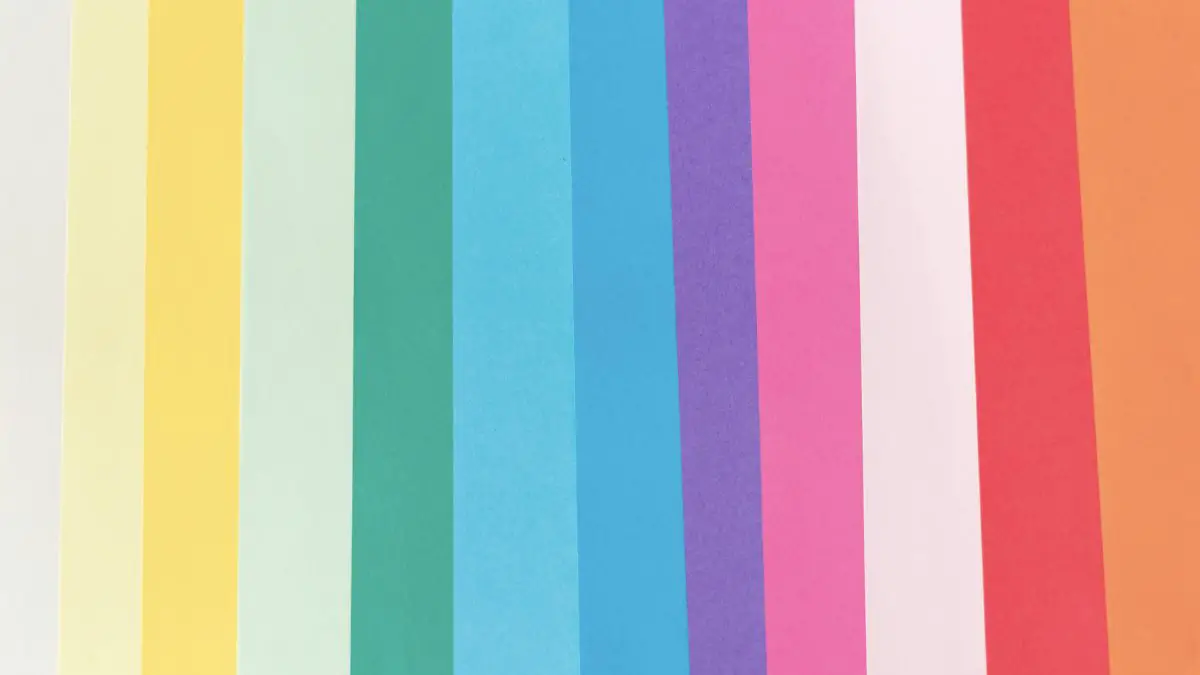Colors are probably some of the first words you learn when you start speaking a new language. You may begin by using these colors to describe how things look, but they can have a much deeper meaning than this.
Here we’re going to look at how to use colors to describe people, especially their feelings, emotions, mood, and personality.
Take a look at some of the most common color associations with emotion and personality in English, including some color idioms and expressions.

Using colors to describe people and their emotions
Blue
If you are feeling blue, it means you are sad, gloomy, down, or depressed.
“I should pay Selina a visit; she’s been feeling blue ever since her boyfriend left her.”
You can check out some more sad idioms here.
When someone is blue in the face, it means they are at an extreme point of exasperation, frustration, anger, etc. This state often arises from some kind of exertion or effort.
“I had to argue until I was blue in the face to get a refund!”
“We had such fun at the comedy club last night; I was blue in the face with laughter!”
This comes from the idea that your face turns blue when you are not inhaling enough oxygen.
Yellow
Yellow is a color associated with cowardice, and you might hear a coward referred to as a yellow-belly.
But, being the color of sunshine, yellow is also considered a warm, happy color.
Green
We associate green with the feeling of envy or jealousy, and you might say someone is green with envy.
“Cathy will be green with envy when she sees my new handbag.”
We sometimes refer to jealousy as the green-eyed monster.
“I think Adam got a touch of the green-eyed monster when he saw you talking to Adrian.”
On the other hand, green is a very common color in nature and can elicit feelings of calm. This is why there is traditionally a green room where performers can wait before appearing on stage.
Aside from its color emotion meaning, green can also be used to describe someone who looks unwell (usually because they have turned very pale). Read our article about well vs good to know whether to say someone “doesn’t look well” or “doesn’t look good”.
Red
If someone is red in the face it could be due to anger, embarrassment, or exertion. You’ll need to use the context to determine which of these emotions the color is describing.
“My date last night had absolutely no table manners. I was quite red in the face by the end of the meal.”
“I can’t believe that just moving a few boxes has left you red in the face.”
To catch someone red-handed means to catch them in the middle of committing a crime or doing something they shouldn’t be doing.
“I caught Benny red-handed sneaking out of the house last night.”
Generally, the color red is associated with strong emotions and feelings such as anger, desire, danger, passion, and love.
Red is the color traditionally associated with Valentine’s Day, but you’ll also see that red appears in several anger idioms. So, when using colors to describe people, you must be careful that your meaning is clear. You wouldn’t want a Valentine’s message to come across as angry!
Fortunately, we have some love idioms too, and they will help you convey your true feelings.
White
When someone turns very pale due to shock or fright, we might say they are as white as a sheet.
“Jayla turned as white as a sheet when she saw the snake.”
Somebody whiter than white is completely pure, good, and honest.
“I thought she was whiter than white until I found out she’d been skipping classes.”
Pink
We say that someone is tickled pink if they are very pleased or entertained.
“The entire audience was tickled pink by the performance.”
Find some more idioms about happiness and entertainment here.
Brown
A brown-nose (also a verb) is someone who flatters to gain a personal advantage.
“I’m sure you’ll get a promotion after all that brown-nosing you’ve been doing!”
“Stop being such a brown-nose; just do your job and well and you’ll get the recognition you deserve.”
Although this idiom has a vulgar origin, it is not considered crass in everyday usage.
Black
When using colors to describe people and their emotions or mood, black typically refers to depression and rebellion.
Depression or a general feeling of melancholy is sometimes referred to as the black dog.
There are also many ‘as black as…’ expressions such as:
- As black as night
- As black as a raven
- As black as ink
- As black as thunder
- As black as coal
While these can all simply mean that the thing being described is completely black, they can also refer to something that is completely evil, ungenerous, or mean-spirited in nature or disposition.
Whenever the color black is used to describe feelings, emotions, or personality, you can assume it has a negative meaning.
Color emotions to describe personality
So far we have mainly covered how to use colors to describe people in common idioms and expressions. However, you can go much deeper and begin associating colors with emotions and personality.
In fact, this whole concept really took off in 2021 when a Tiktok color personality test went viral. The novelty of this seemed to come just as much from the unusual color emotions it pumped out as from the accuracy of the test itself.
Social media trends aside, there is plenty of evidence to show that colors can directly impact our mood. Warm colors like yellow, orange, and red tend to excite, while cool colors like purple, blue and green are more calming or neutral. We also judge others depending on the colors they wear.
But, keep in mind that the ways we use color to describe personality can vary from one culture to another. Here we have given you some common color emotions meanings in English – but the French are more likely to be yellow with envy (jaune de jalousie) and green with rage (vert de rage).
So, how are you feeling today? Do any of these colors describe how you feel? Or perhaps they resonate with your personality traits?
Are any of these colors associated with different emotions in your native language? If so, why not leave a comment below to share the alternative meanings you are familiar with?


